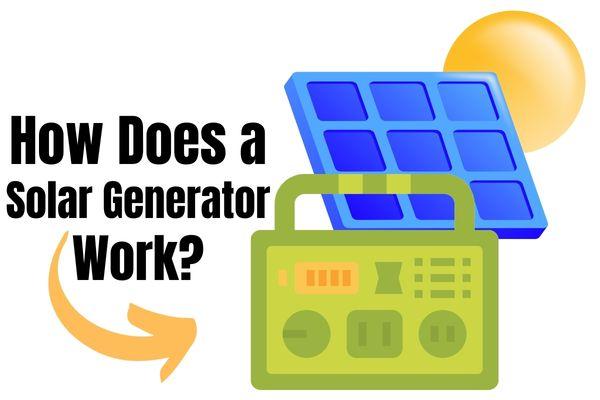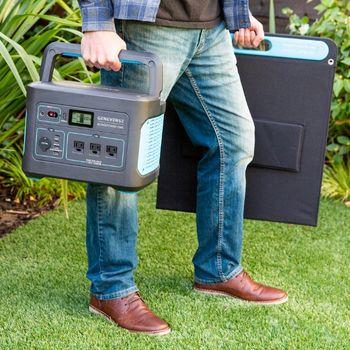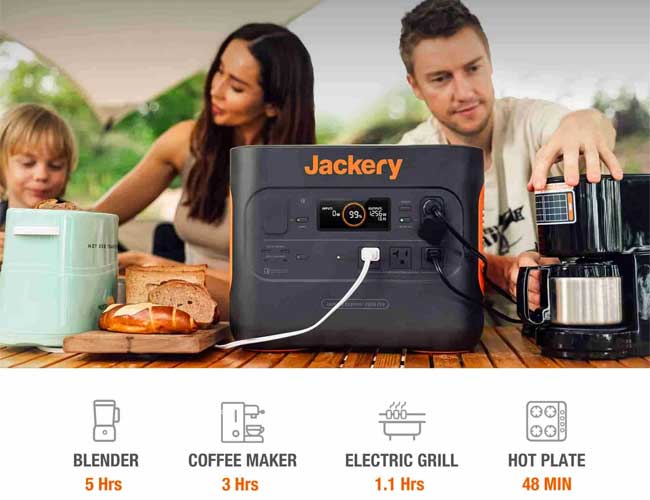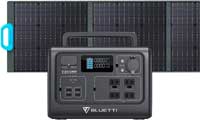In short, solar generator converts sunlight into electricity through a process called photovoltaics. A typical portable solar generator kit will include a solar panel, a charge controller, a battery and an inverter. Therefore, you don’t have to build a generator yourself.

Plus, you can easily transport these compact units from one location to another (ie camping, work, travel, etc..). Many people find these self-contained systems really handy for off-grid living or emergency power outages.
Some kits even include additional components like cables, connectors and carrying cases. (So, you don’t have to purchase any additional accessories to start generating power.)
Below, we explain how a solar generator works in 4 steps.
Step 1: Solar Panels Collect Energy
First, sunlight hits the solar panel. Then, it creates a flow of electrons that get captured by the photovoltaic cells and convert into DC electricity.
Step 2: The Charge Controller Regulates Electricity Flow
Next, the electricity flows into the charge controller, which regulates the flow of electricity to the battery. It also prevents overcharging or discharging and ensures that the battery gets charges efficiently and safely.
Step 3: The Battery Stores the Energy
Then, the battery stores the electricity until it is needed. Solar generator kits typically use lithium ion batteries rather than lead acid because they offer several advantages.
For example, lithium ion batteries have a higher energy density. In other words, they can store more power in a smaller space. They also last longer, charge faster and run more efficiently than lead acid batteries. Furthermore, they can hold a charge longer when not actively in use.
Although lithium ion batteries cost more up front, they are more convenient to use, don’t have to be re-charged as often and they have a longer lifespan. Consequently, they are lower maintenance and may end up saving you money in the long run.
Step 4: Inverter Converts DC into AC Energy
Last, the inverter converts the DC electricity (stored in the battery) into alternating current (AC) electricity. Then, you can use it to power appliances and electronic devices.
What devices can a solar generator power? Solar-powered generator typically can power small appliances, lights and electronics like computers, cameras and phones. The size and capacity of the generator will determine how much electricity it can generate and how long it can provide power.
For example, smaller solar generator kits can run laptops, cpap devices, coffee machines, etc.. While medium-sized portable generators can also power power tools, blenders, hair dryers, etc… On the other hand, larger whole house backup power packages can run a fridge, dishwasher, heaters and more.
How long does it take to charge a portable solar generator kit? Generally, it takes between 6-8 hours to fully charge the battery using a standard solar panel. However, many kits let you connect multiple solar panels so you can generate more power faster.
How long can a portable solar generator kit provide power? On average, a small kit can power devices for a few hours, while a larger kit can provide power for several days.




